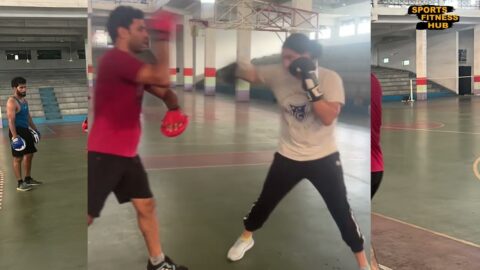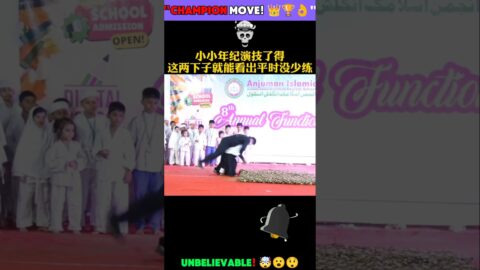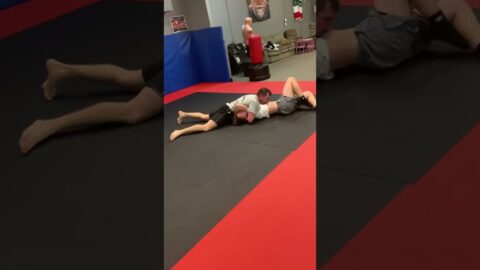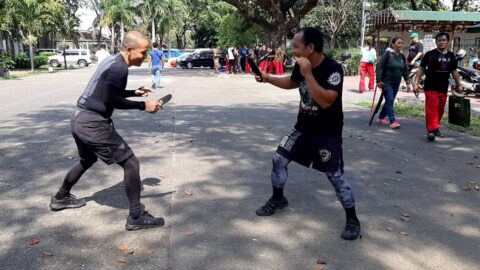Taekwondo is an official sport just like football, soccer, and baseball! This video introduces students to what Olympic Style Taekwondo Sparring is all about. It will go over the basics of whats required, how to score points in sparring, and examples of whats not allowed and how it will deduct points from your score. We hope you all enjoy this video and find it very informative!
—————————–
Taekwondo originates in Korea and combines combat and self-defense techniques. In Korean, Tae means Hand, Kwon means Foot, and Doh means Mind. Together it is the art of fighting using your hands, feet, and mind as one. We practice Taekwondo to promote a strong mind, strong body, and good self-defense.
It became a fully fledged Olympic sport at the 2000 Sydney Olympics and is practiced world wide. Under the Olympic rules governed by World Taekwondo, sparring is a full contact knockout sport that takes place between two competitors. The fighting area is typically an 8m by 8m ring consisting of an Octagon or Square. Each match has 3 rounds of 2 minutes where competitors fight for points or until their opponent is unable to continue. If a competitor has a 12 point lead by the end of the 2nd round or achieves a 12 point lead during the 3rd round, the match is ended immediately.
In Taekwondo, we wear a white uniform called a Dobok. During sparring, we are required to wear full protective gear. In competitions, one opponent is red and the other is blue. Sparring gear consists of headgear, hand and arm protectors, shin and foot protectors, a chest protector called a Hogu, a mouthpiece, and cup. Depending on the Association, Black Belts may also wear electronic protective gear that tracks kicks and punches. During a match, competitors can have a coach that can help with strategies and even challenge a point so that it is reviewed by the referring officials.
Points are awarded for permitted accurate powerful techniques delivered to the legal scoring areas. There are five ways to score a point during a match. Attacks to the chest protector can be made using the hand or foot. Attacks to the head can only be made using the foot.
Do not punch head or attack the spine. These are examples of Gam-Jeoms and are not allowed.
The only techniques that are allowed are where the athlete uses any part of their foot below the ankle and with the knuckles of their fist.
Scoring differs based on how and where the opponent is attacked.
1 point is awarded for a valid punch to the chest protector
2 points for kick to the chest protector
4 points for a turning kick to the chest protector
3 points for a kick to the head.
A turning kick to the head achieves a maximum of 5 points. Taekwondo is a martial art that puts a special emphasis on face high kicks.
The competitor with the most points at the end of the 3 matches wins. In the event the winner cannot be decided after 3 rounds due to a tie, a 4th round or Golden Round will be conducted. The first opponent to get 2 points within the 1 minute time frame wins the match. If there is still no score at the end of the 4th Golden Round, the referring officials will decide which contestant performed the best.
Taekwondo is a knockout competition with multiple weight categories based on age and gender. For an open tournament, typically only Black Belts are required to weigh in. This varies based on the presiding association, but generally follows the rules laid out by the World Taekwondo organization.
Taekwondo sparring does have rules. Gam-Jeoms or Penalties result when you break the rules or do something illegal to your opponent. Breaking the rules will award your opponent with a point. Gam-Jeoms are meant to help keep the matches safe and fair during sparring. Things like punches to the face, kicks below the waist, and grabbing are not allowed. These all promote good sportsmanship.
Taekwondo sparring starts at the dojang. It is there where you will start to learn proper sparring footwork and technique. You start to wear basic sparring gear at White Belt. It is required that you wear a full set of sparring gear once you get your green belt and up. Failure to wear the proper gear, a helmet, or even a sports cup can put you at risk of getting hurt. Safety is important to us.
Sparring at the Dojang is all about fun and practicing technique. It is not about power or knocking out your opponent. Use this time to work on footwork, practice techniques, and try new strategies. Develop as a fighter for when you face your opponent at the real tournaments.
It is never too early or too late to begin learning how to spar and get into Taekwondo as a sport. With enough training, even you could go to the Olympics.
Whether you take Taekwondo purely for self-defense, mastering Poomsae for competitions, competing in sparring tournaments, learning weapons, breaking boards, or doing awesome acrobatic tricks – Just have fun with it!







 #fighting #martialarts
#fighting #martialarts



